by Kristen Minogue
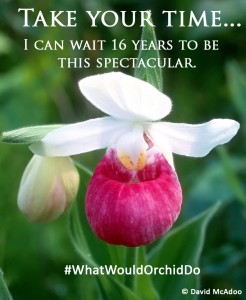 There’s a reason orchids are called the smartest plants on Earth. Several, in fact, and not all of them good. Some orchids can be crafty, devious pretenders, using their fragrance to trick insects into pollinating them but giving no nectar in return (we’re looking at you, Dragon’s Mouth and Fairy’s Slipper). But most lessons from the orchid world are more encouraging. Many remain beautiful in winter and thrive after fire. In the final days of the semifinals of the Smithsonian Showdown, we’ve adopted a new motto: What Would Orchid Do? After all, they have been around for 80 million years. Any species that survived from the age of the dinosaurs has to have done something well.
There’s a reason orchids are called the smartest plants on Earth. Several, in fact, and not all of them good. Some orchids can be crafty, devious pretenders, using their fragrance to trick insects into pollinating them but giving no nectar in return (we’re looking at you, Dragon’s Mouth and Fairy’s Slipper). But most lessons from the orchid world are more encouraging. Many remain beautiful in winter and thrive after fire. In the final days of the semifinals of the Smithsonian Showdown, we’ve adopted a new motto: What Would Orchid Do? After all, they have been around for 80 million years. Any species that survived from the age of the dinosaurs has to have done something well.
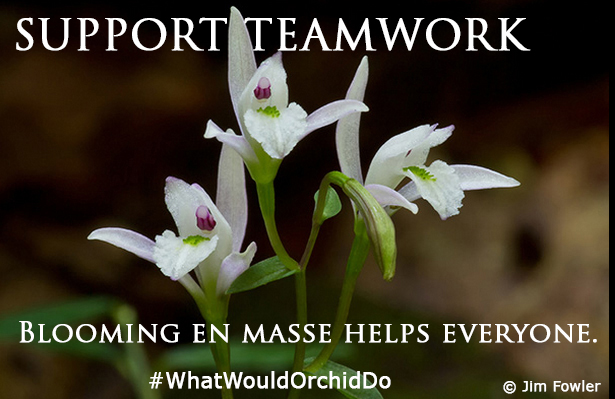 Three Birds Orchid (Triphora trianthophora). The flowers of the Three Birds Orchids are among the hardest to find, not only because they’re rare (they’re vulnerable worldwide and endangered in Canada), but because they blossom only a few days in late summer. Taking their cue from the temperature–usually a couple cool days followed by a couple warm days–every plant in a population blossoms at the same time in a massive bloom. It’s thought this synchronized display is better at attracting insects. And orchid photographers.
Three Birds Orchid (Triphora trianthophora). The flowers of the Three Birds Orchids are among the hardest to find, not only because they’re rare (they’re vulnerable worldwide and endangered in Canada), but because they blossom only a few days in late summer. Taking their cue from the temperature–usually a couple cool days followed by a couple warm days–every plant in a population blossoms at the same time in a massive bloom. It’s thought this synchronized display is better at attracting insects. And orchid photographers.
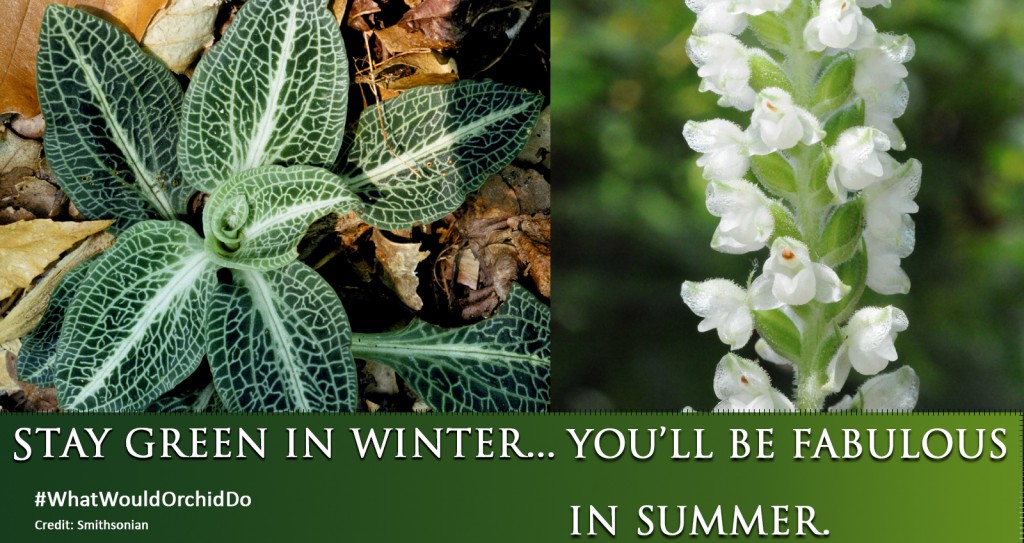 Downy Rattlesnake Plantain (Goodyera pubescens). The Rattlesnake Plantains are wintergreen orchids that produce striking dark green rosettes in the colder months. There are about 25 species worldwide and four in North America. The one pictured above, the Downy Rattlesnake Plantain, grows throughout the eastern half of the U.S. and Canada. In the heat of midsummer, it can shoot forth a dense cluster of more than 50 white blossoms.
Downy Rattlesnake Plantain (Goodyera pubescens). The Rattlesnake Plantains are wintergreen orchids that produce striking dark green rosettes in the colder months. There are about 25 species worldwide and four in North America. The one pictured above, the Downy Rattlesnake Plantain, grows throughout the eastern half of the U.S. and Canada. In the heat of midsummer, it can shoot forth a dense cluster of more than 50 white blossoms.
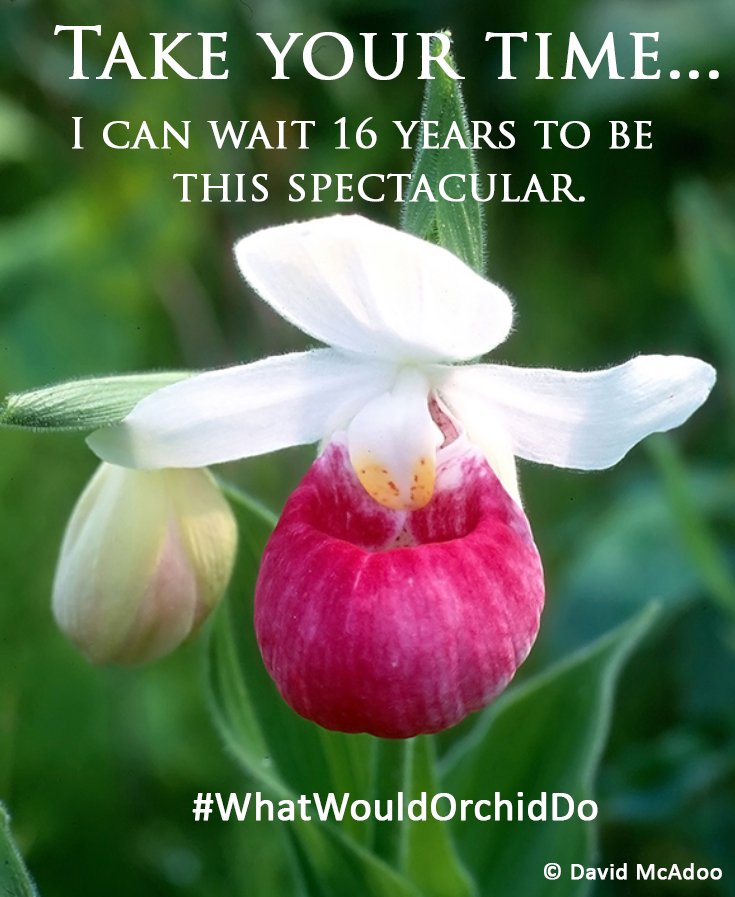 Queen’s Lady Slipper (Cypripedium reginae). Lady’s Slipppers are among the most beautiful orchids in North America, and the Queen’s Lady’s Slipper (also called the Showy Lady’s Slipper) has well earned its place in their ranks. But they don’t blossom overnight. A Queen’s Lady Slipper can take 16 years to put forth its first bloom. It’s called vegetative dormancy, remaining underground during an entire growing season (or several). During that time, the plant remains alive but is unable to photosynthesize or reproduce sexually. Scientists still aren’t certain why vegetative dormancy evolved, but one possibility is that it shelters the plant when conditions aboveground aren’t as good. However, when conditions are good, a Queen’s Lady’s Slipper can produce more than 200 flowering stems in its lifetime.
Queen’s Lady Slipper (Cypripedium reginae). Lady’s Slipppers are among the most beautiful orchids in North America, and the Queen’s Lady’s Slipper (also called the Showy Lady’s Slipper) has well earned its place in their ranks. But they don’t blossom overnight. A Queen’s Lady Slipper can take 16 years to put forth its first bloom. It’s called vegetative dormancy, remaining underground during an entire growing season (or several). During that time, the plant remains alive but is unable to photosynthesize or reproduce sexually. Scientists still aren’t certain why vegetative dormancy evolved, but one possibility is that it shelters the plant when conditions aboveground aren’t as good. However, when conditions are good, a Queen’s Lady’s Slipper can produce more than 200 flowering stems in its lifetime.
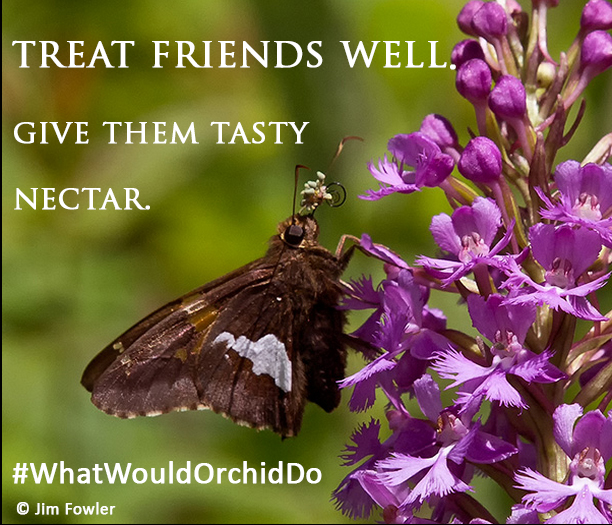 Lesser Purple Fringed Bog Orchid (Platanthera psycodes). If orchids had beauty pageants, the Platantheras, or “Bog Orchids,” would be frontrunners for Miss Congeniality. While some orchids act more like conniving coquettes–luring insects with bright petals and perfume but offering no nectar for their time–the Bog Orchids offer all their pollinators a sweet drink from their flowers. And they welcome a wide clientele: Butterflies, skippers and moths have all been known stop by for sip.
Lesser Purple Fringed Bog Orchid (Platanthera psycodes). If orchids had beauty pageants, the Platantheras, or “Bog Orchids,” would be frontrunners for Miss Congeniality. While some orchids act more like conniving coquettes–luring insects with bright petals and perfume but offering no nectar for their time–the Bog Orchids offer all their pollinators a sweet drink from their flowers. And they welcome a wide clientele: Butterflies, skippers and moths have all been known stop by for sip.
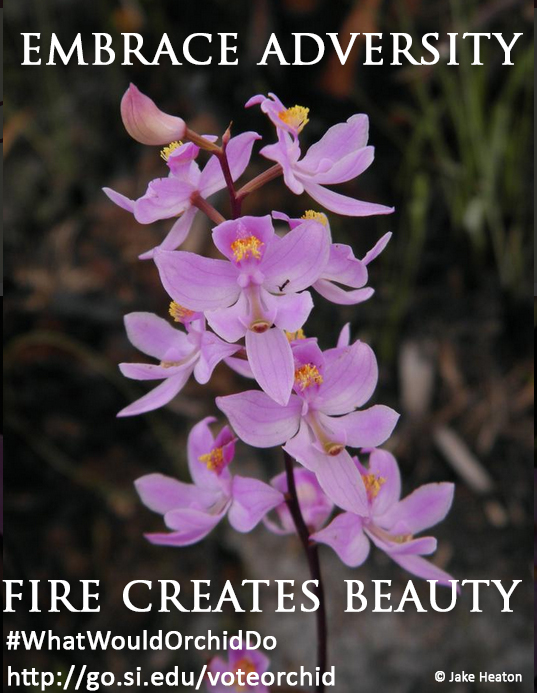 Many Flowered Grass Pink (Calopogon multiflorus). Wildfires aren’t exclusively destructive. Small fires are a vital part of the cycle of life in a forest or grassland, burning away shrubs and other low understory so other plants can grow. One of those plants is the Many Flowered Grass Pink Orchid. A fire-respondent orchid, it often flowers a few weeks following a burn in spring.
Many Flowered Grass Pink (Calopogon multiflorus). Wildfires aren’t exclusively destructive. Small fires are a vital part of the cycle of life in a forest or grassland, burning away shrubs and other low understory so other plants can grow. One of those plants is the Many Flowered Grass Pink Orchid. A fire-respondent orchid, it often flowers a few weeks following a burn in spring.
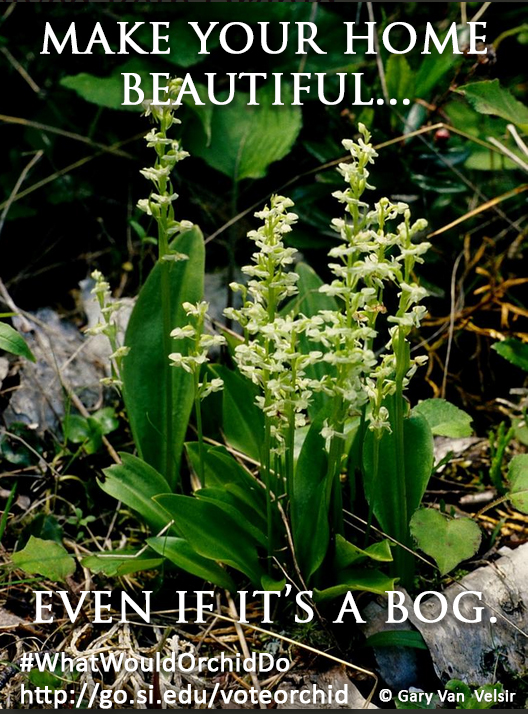 Blunt Leaved Bog Orchid (Platanthera obtusata). A northern flower, the Blunt Leaved Bog Orchid can survive in all kinds of places. Some are picturesque (moist pine forests and meadows), some less so (bogs and swamps) and some are hardly wild at all (along roadsides). In northeastern states, its pale green blossoms are a common site in late spring and summer.
Blunt Leaved Bog Orchid (Platanthera obtusata). A northern flower, the Blunt Leaved Bog Orchid can survive in all kinds of places. Some are picturesque (moist pine forests and meadows), some less so (bogs and swamps) and some are hardly wild at all (along roadsides). In northeastern states, its pale green blossoms are a common site in late spring and summer.
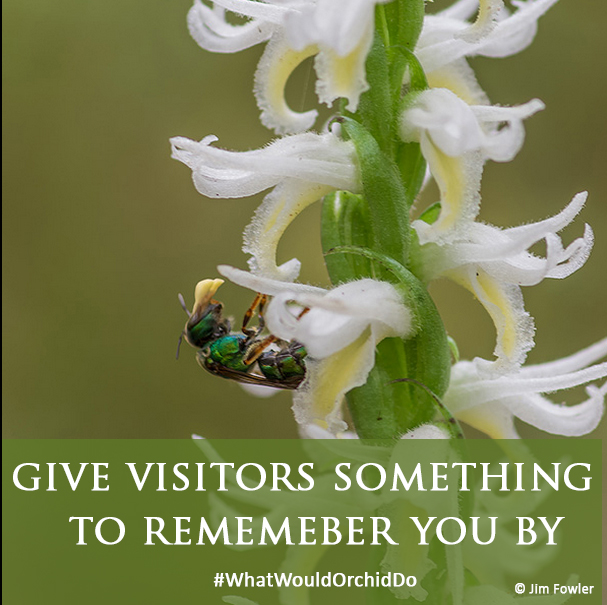 Marsh Ladies’ Tresses (Spiranthes odorata). When an insect visits the Marsh Ladies’ Tresses, it’s forced to bury its head deep into the orchid’s petals to drink the nectar inside. When it emerges, the orchid leaves a small “gift” right between its eyes: clumps of pollen called pollinia. The next time the insect stops for a drink at another flower, it should dislodge the pollinia, enabling cross-pollination to create more orchids. The orchid can only hope the next flower the insect lands on happens to be the same species…or at least another Ladies’ Tresses.
Marsh Ladies’ Tresses (Spiranthes odorata). When an insect visits the Marsh Ladies’ Tresses, it’s forced to bury its head deep into the orchid’s petals to drink the nectar inside. When it emerges, the orchid leaves a small “gift” right between its eyes: clumps of pollen called pollinia. The next time the insect stops for a drink at another flower, it should dislodge the pollinia, enabling cross-pollination to create more orchids. The orchid can only hope the next flower the insect lands on happens to be the same species…or at least another Ladies’ Tresses.
All the orchids above grow in North America. The continent is home to 200-plus native orchids, but more than half are threatened or endangered somewhere they used to thrive. If you love orchids, join the fight to help protect them! Check out the North American Orchid Conservation Center, and learn how scientists at the Smithsonian Environmental Research Center and across the continent are working to preserve them. To find out which orchids grow near you, visit Go Orchids and explore more than 200 North American orchid species in depth.

